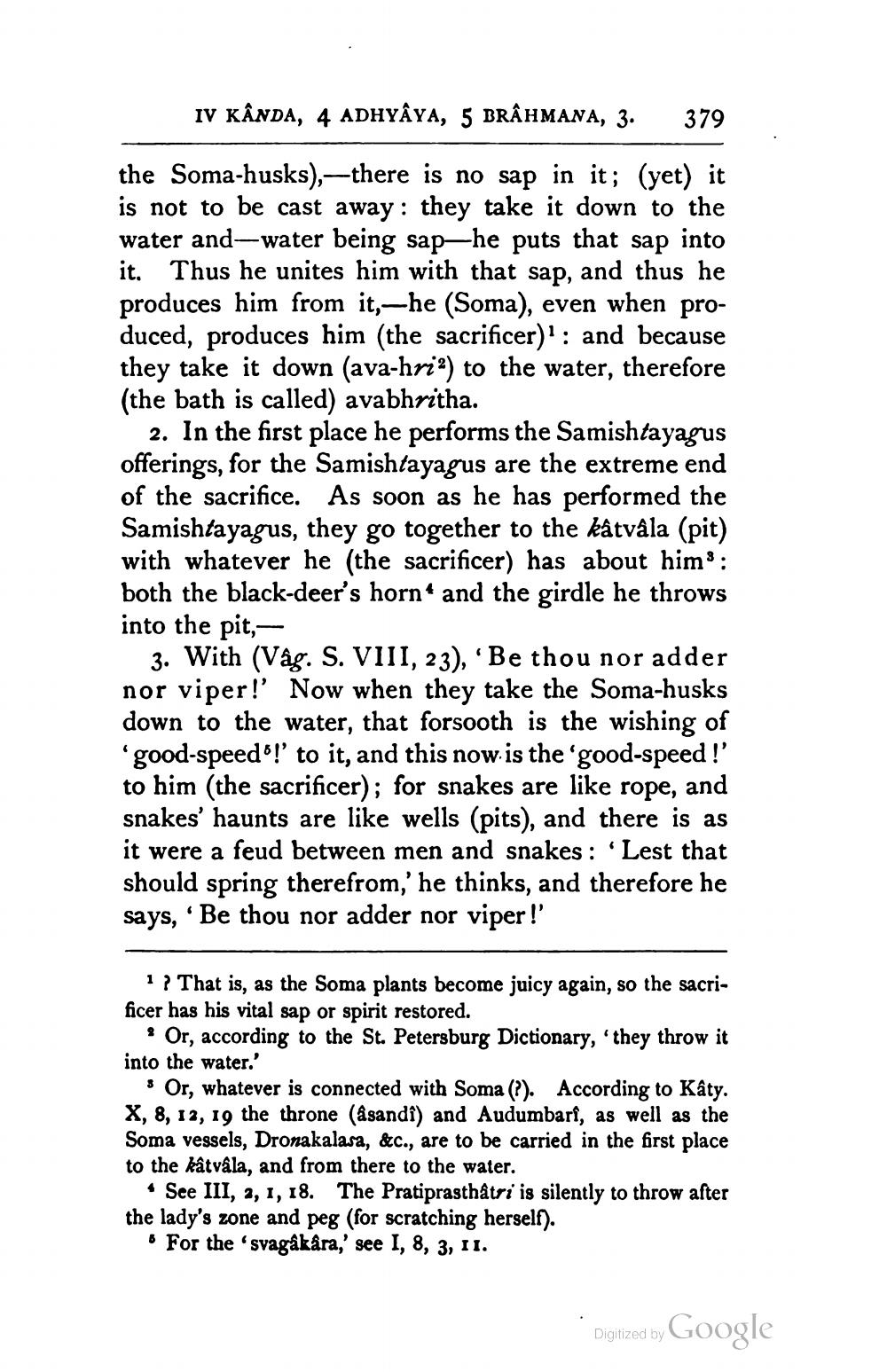________________
IV KÂNDA, 4 ADHYÂYA, 5 BRAHMANA, 3.
379
the Soma-husks),—there is no sap in it; (yet) it is not to be cast away : they take it down to the water and water being sap—he puts that sap into it. Thus he unites him with that sap, and thus he produces him from it,-he (Soma), even when produced, produces him (the sacrificer)': and because they take it down (ava-hria) to the water, therefore (the bath is called) avabhritha.
2. In the first place he performs the Samishtayagus offerings, for the Samishtayagus are the extreme end of the sacrifice. As soon as he has performed the Samishtayagus, they go together to the katvala (pit) with whatever he (the sacrificer) has about him8: both the black-deer's horn* and the girdle he throws into the pit,
3. With (Vág. S. VIII, 23), 'Be thou nor adder nor viper!' Now when they take the Soma-husks down to the water, that forsooth is the wishing of 'good-speed6!' to it, and this now is the 'good-speed !' to him (the sacrificer); for snakes are like rope, and snakes' haunts are like wells (pits), and there is as it were a feud between men and snakes : 'Lest that should spring therefrom,' he thinks, and therefore he says, 'Be thou nor adder nor viper!'
1 ? That is, as the Soma plants become juicy again, so the sacrificer has his vital sap or spirit restored.
. Or, according to the St. Petersburg Dictionary, 'they throw it into the water.'
s Or, whatever is connected with Soma (?). According to Kâty. X, 8, 12, 19 the throne (@sandî) and Audumbari, as well as the Soma vessels, Dronakalasa, &c., are to be carried in the first place to the katvala, and from there to the water.
See III, 2, 1, 18. The Pratiprasthåtri is silently to throw after the lady's zone and peg (for scratching herself).
6 For the 'svagåkåra,' see I, 8, 3, 11.
. Digitized by Google




